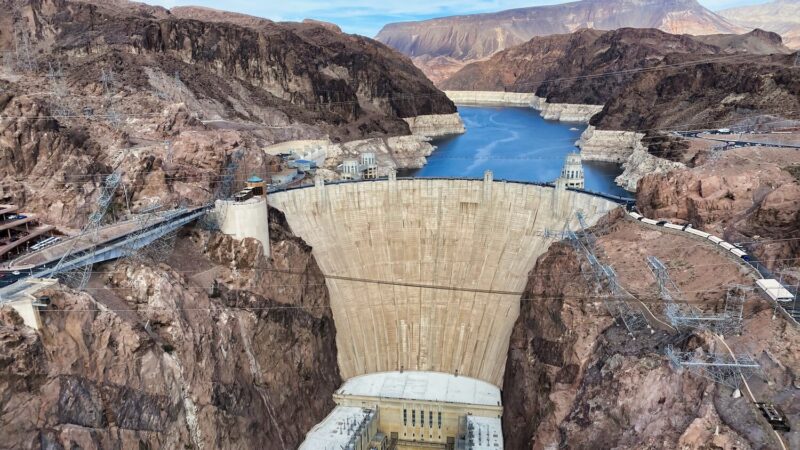
- Climate Change
- Nature & Conservation
- Energy & Technology
- Law & Policy
- Environmental Justice
- Cities & Towns
L.A. County taps UCLA to help create first-ever sustainability plan
OurCounty initiative aims for fossil-free future, addresses environmental injustices
The Los Angeles County Board of Supervisors today unanimously approved an ambitious sustainability plan that calls for phasing out fossil fuels, deriving 80% of the county’s water from local sources and a host of other actions to address climate change and improve quality of life in the region.
Sixteen UCLA researchers contributed to the OurCounty plan, which was created by the county’s Chief Sustainability Office. BuroHappold Engineering and the Liberty Hill Foundation, a social justice organization, also played key roles in the plan.
Gary Gero, the county’s chief sustainability officer, underscored the importance of that collaborative effort at the August 6 Board of Supervisors meeting.
“Before we ever wrote a single word of this plan, we went out to communities and consulted with the real experts on the ground — the people whose lived experience tells them what could make their communities better,” Gero said.
Supervisor Sheila Kuehl characterized the OurCounty plan as “the biggest in the nation, the most ambitious in the nation, dare I say the most progressive in the nation — and the result of a great deal of work by many, many hardworking and dedicated people.”
Stephanie Pincetl, a UCLA professor-in-residence who researches ways to make cities sustainable, said large-scale, collective action, coordinated at a high level, is needed to combat the climate crisis.
“L.A. County is not just addressing 21st century issues; it is now taking a national leadership role,” she said. “This is an extremely complex urban environment. There are 88 cities, many government agencies and plenty of diversity. There is also a growing sense that people need to change habits, and that’s hopeful.”
Focus on equity
OurCounty is the first-ever comprehensive sustainability plan for Los Angeles County, the most populous and one of the most diverse counties in the United States. The plan was developed over the course of 18 months and incorporates feedback from more than 200 public meetings — outreach that was facilitated by a broad consortium of organizations, community members and other stakeholders.
The plan outlines 12 goals that address a broad range of environmental, economic, health and quality-of-life issues for the county’s 10.1 million residents.
“This sustainability plan is very different than others we’ve seen before,” said Sean Hecht, co-executive director of UCLA’s Emmett Institute on Climate Change and the Environment. “It links environmental sustainability to economic sustainability, with the broader goal of equity, in ways that are quite unusual and forward-thinking,”
The plan explicitly addresses inequalities faced by the county’s most disadvantaged communities, which have suffered disproportionately from the negative health effects of pollution. It prescribes a series of actions by county agencies and partners — such as siting new playgrounds, schools, housing and other “sensitive uses” at least 500 feet from freeways — to reduce pollution and childhood asthma rates in those communities.
The plan also calls for expanded monitoring of drinking water for secondary contaminants, which affect the taste, color and odor of tap water, as well as more lead testing in schools and day care centers.
Eliminating fossil fuel production
As part of its commitment to the Paris climate agreement, Los Angeles County has pledged a drastic reduction in greenhouse gas emissions. OurCounty sets goals to reduce emissions 25% by 2025 and achieve carbon neutrality countywide by 2050. It calls for eliminating fossil fuel production — including drilling, production and refining — in Los Angeles County.
“Phasing out fossil fuels is absolutely fundamental to almost everything else the county is trying to achieve in the plan,” said Felicia Federico, executive director of the California Center for Sustainable Communities at UCLA. “It relates to air quality, public health, reducing toxic waste and other issues that affect our day-to-day lives.”
Moving away from fossil fuels will require retraining workers for new jobs in clean energy and other fields, too. But, the plan notes, with the number of clean tech jobs continuing to rise locally and globally, it’s not an impossible challenge.
More locally sourced water
The county imports 59% of its water, a majority of which comes from places hundreds of miles away, such as the Colorado River and the Sacramento–San Joaquin Delta. OurCounty sets a path toward sourcing 80% of the county’s water locally by 2045 using strategies like stormwater capture, recycled water and conservation incentives.
Although many believe Los Angeles is a desert and has no water, the region has vast groundwater resources and the potential to store much more. Changes to landscaping, more water storage in the ground and better management strategies for its sharing, and water recycling and conservation all will help the region greatly enhance its water self-reliance.
UCLA-led research has shown that Los Angeles County’s transition to local water is not only possible, but also cost effective. Measure W, passed by county voters in 2018, will help the county reach its local water goal — generating $300 million annually for storm water collection infrastructure that could meet up to one-third of the county’s water needs.
Maintaining biodiversity
Located in a global hotspot for biodiversity, Los Angeles County is home to more than 4,000 distinct species of plants and animals. Under the sustainability plan, the county will strive for “no loss of native biodiversity.”
This goal is especially significant in light of a recent United Nations report that 1 million animal and plant species could soon become extinct due to human activity.
“This is a big commitment because of the trends we’re seeing globally,” said Cassie Rauser, director of UCLA’s Sustainable LA Grand Challenge, which aims to transition Los Angeles County to exclusively renewable energy and local water, while enhancing ecosystem health, by 2050.
Directives set forth by the grand challenge initiative were instrumental in shaping the Los Angeles County plan, which will focus on protecting more natural land and increasing the percentage of protected wildlife corridors, where species can travel more safely between habitats.
“UCLA is committed to making Los Angeles the world’s first sustainable megacity,” Rauser said. “This plan advances our vision to make the county more resilient and healthier for all its residents — especially those most affected by decades of unsustainable practices. This ambitious plan can serve as a model for megacities around the globe.”
Top image: View of downtown Los Angeles from Griffith Park. | Photo by Jake Dobkin.
Published:


